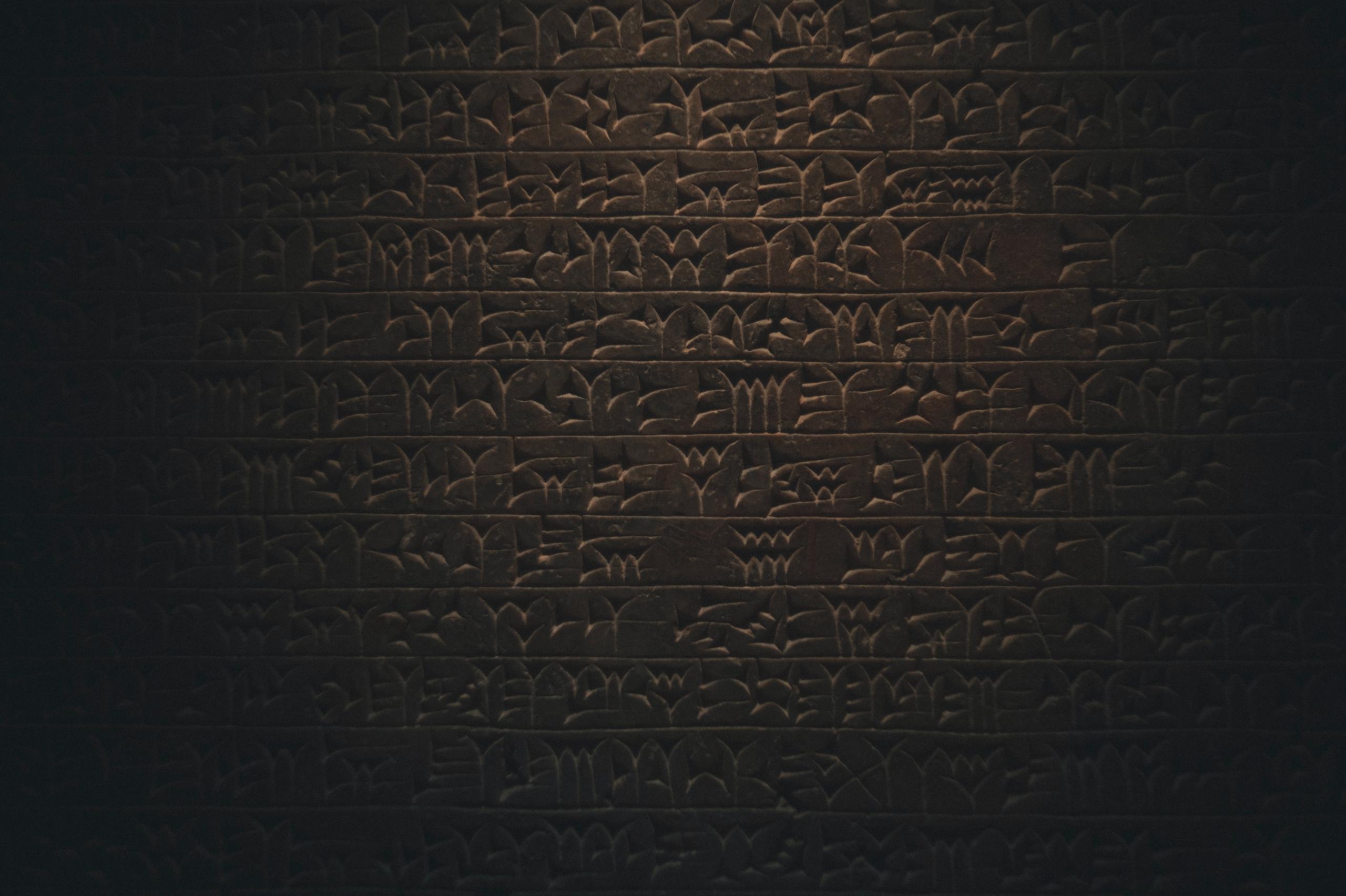What is sexagesimal and what exactly is a cuneiform script? While there are many iconic images and historical moments we know from another ancient math giant, the Egyptians, many people have a hard time remembering what the Babylonians were all about.
If you’ve ever taken any course that mentioned Mesopotamia then you’ve learned about the Babylonians. Located in present-day Iran and Iraq, many people tend to think of Babylon as one of the first great cities. While this is debatable, we cannot deny the impact Babylonian civilization has had on modern-day politics, history and mathematics.
You can use your knowledge of Babylonian numerals to understand our maths in today’s world. Learning about the sexagesimal and cuneiform notation can help you answer questions you never even knew you had about our own counting system. For example, why exactly is zero in the middle of all numbers?
If you want to know more about mathematics in general, particularly how you can help a child learn more foundational skills, feel free to check our guide on the best mathematics games for children online today!
Let’s dive into the mathematical history of this ancient civilisation!

History of Babylonian Civilization
Mesopotamia was a region in ancient history that covered parts of modern-day Turkey, Syria, Iran, Iraq and even Kuwait - spanning all along with the Tigris and Euphrates river systems. You might have also heard of this region called the Fertile Crescent.
While their maths systems seem entirely different to our own, Mesopotamia and Egypt led the birth of mathematics as we know it today. Any history course will tell you that the Mesopotamian civilisation started around 3100 BC and ended with the fall of Babylon in 539 BC.
The people who inhabited the region are often referred to as Babylonians, although in reality they are called Sumerians and Akkadians. Much of what these ancient people discovered was written on clay tablets and gives us a lot of insight into the kinds of problems they had to solve on a daily basis.
Similar to other ancient mathematics, much of what was discovered in Mesopotamia are things that we consider to be quite basic maths today. You will find on these Babylonian tablets ideas such as quadratic and cubic equations and the Pythagorean theorem! Let’s take a closer look at their mathematical notations and numerals.
A Positional Number System
In order to understand the number system used by these people, we must first have to understand our very own number system. In the modern-day, we use a positional number system. While this may already sound like some complicated mathematical term, it is really quite simple.
Positional numerals are simply numbers zero through nine. While we only have these 10 symbols (0, 1, 2, 3, 4, 5, 6, 7, 8, 9) we aren’t just limited to making numbers 9 and under. We can use these symbols in combinations to make millions of other different numbers.
These numerals are also written and read from left to right in a column. Depending on where the number is placed, it corresponds to a certain amount. Let’s take a look at what this means!
| Symbol | Place | Meaning |
|---|---|---|
| 2 | Ones place | We have 2 ones (2*1) |
| 20 | Tens place | We have 2 tens (2*10) |
| 200 | Hundreds place | We have 2 hundreds (2*100) |
| 2000 | Thousands place | We have 2 thousands (2*1000) |
As you can see, where we place the 2 is very important because it can mean we either have 20 or 200. We couldn’t place the 2 in the middle, like 020, and read it as 200. This is what a positional number system means.
Babylonian numerals didn’t start out as using this positional system. Going back to around 3500 BC we see the Sumerians use a mathematical system where the notation for numbers were different symbols. The Sumerians only had symbols for the numbers 1, 10, 100 and 1000. This means they could only write up to the number 9999.

Like many ancient civilisations, they did not have any symbol for the number zero. The symbol for 1 was a flashlight shape, the symbol for the number 10 was an arrow, etc. It didn’t actually matter in which order you wrote these symbols, as each number had its symbol. This means it was non-positional.
This system had many shortcomings. So, at one point in their history, they made several reforms to their numerical system. First, they adopted the positional system we use today. However, instead of having a base of 10, these people actually used a maths system with a base of 60!
One special word for number systems with a base of 60 is a sexagesimal numeral system. In fact, from their sexagesimal system with a base of 60 comes our modern-day use of various things such as 60 seconds in a minute, 360 degrees in a circle and more!
This means they had symbols for every number between 1 and 59. Because it was positional, this means that if you had a symbol for 1 and 40 on the same like, you would get:
1*60 + 40*60 = 2460
The number 60 was a great number to choose as a base because it made fractions super easy since 60 has many factors or numbers it can be divided by. Just compare the factors of these two different bases.
| Base | Factors |
|---|---|
| 60 | 1, 2, 3, 4, 5, 6, 10, 12, 15, 20, 30, 60 |
| 10 | 1, 2, 5, 10 |
You can learn more about these kinds of fundamentals with free maths apps!

Maths on Ancient Clay Tablets
Unlike Egyptian mathematics, where we have very few records left of their mathematical processes, we have tons of information on Sumerian mathematics. While Egyptians wrote their numeric processes and systems on papyrus the Sumerian civilisation wrote their records down on clay tablets.
The various fractions and notations of these ancient people were written on clay when the clay was still wet. These tablets were then either baked in an oven or simply by the sun’s heat. Luckily, scientists were able to recover around 400 of these tablets. Most of these come from what is known as the Old Babylonian period, which spanned from 1830-to 1531 BC.
These people wrote on the clay in a type of script called cuneiform script. Cuneiform script is usually described as wedge-shaped as is - alongside Egyptian hieroglyphs, one of the earliest writing systems in the world.
You may notice that cuneiform writing is a lot different from the hieroglyphs of Egypt. The cuneiform script actually came about because of the fact that these early people could not easily create curved lines inside of clay.
Another fun fact is how the Chinese writing system in ancient Chinese mathematics uses logographic characters representing words or morphemes with consistent structure, while Egyptian hieroglyphs combine logograms, phonetic symbols, and determinatives in a more pictorial and complex system.
We have found many principles of mathematics written on these tablets. These include themes such as: fractions, quadratic and cubic expressions and even the Pythagorean theorem!
You can learn more about these concepts with a Maths tutor, as they can be quite difficult to grasp!

Babylonian Table of Squares
While you may be used to calculating squares easily, as you may have had to memorise them for school, these ancient people didn't have it as easy as we do in the modern-day. Because the Sumerians had a bit more complex symbols and rules for their number system, they had to come up with a better solution.
Because the Babylonian number system was a base 60, it could be hard to calculate even operations that we consider to be super simple today. On top of that, there were no decimal points in their system - only integers (also known as whole numbers). The table of squares was a way to write down the guidelines on some of the operations that would have been a bit tricky to just memorise.
In 1877 two tablets were analysed by German Richard Lepsius. These two tablets, he described, were actually lists, or tables, of squares. This analysis and conclusion were also confirmed by George Rawlinson and George Smith. This table of squares gave many insights into how Sumerians performed maths.
Pythagorean Triples
Not only did ancient Greece and Egypt come up with something close to what we know as the Pythagorean theorem, but ancient Babylonians also discovered this somewhat magical triangle. Two Babylonian tablets were discovered that show a list of Pythagorean triples.
These tablets date back to about 1,000 years before Pythagoras actually was alive, suggesting that the infamous theorem was not actually first discovered by the Greek mathematicians and philosophers.
The tablets that were discovered, one of which is more important to this triangle theorem, is called Si.427. It shows how to use Pythagorean triples to create right angles. You may be wondering why this is so important.
Right triangles in engineering, especially back in the olden days - and we're talking way back - were extremely important for building great structures, surveying lands and even more! Pythagorean triples could therefore be used to actually draw better maps!
If you take a look at the tablet itself, it may not look like much. However, what you will see is cuneiform script along with many perpendicular lines. This was to accurately calculate the right angle.
Get started learning about Pythagorean triples today alongside a qualified tutor maths.
















